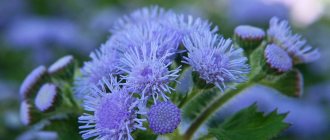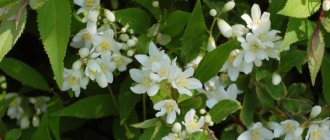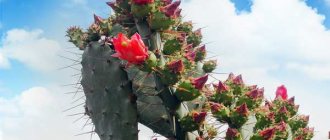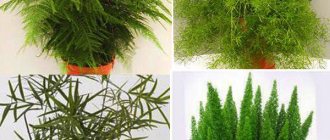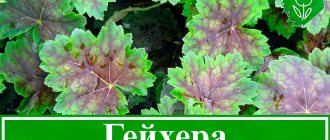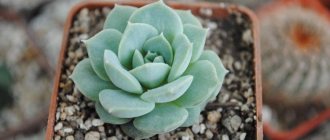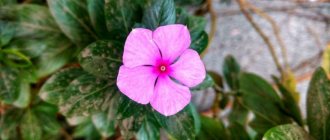Svinchatka is a small evergreen flowering shrub native to the tropics (Svinchataceae family). The scientific name plumbago is Latin for lead. Therefore, it was previously believed that an antidote to this substance could be prepared from it.
It looks like long thin shoots, densely dotted with leaves and inflorescences. Hence its popularity as an ornamental plant for growing in the garden, indoors.
Description of the piglet, or plumbago
The botanical name of the pigweed is plumbago. The plant belongs to the pigweed family. The perennial evergreen shrub can reach 1 m in length, but the bush still remains compact, because the plant grows in the form of a vine.
Plumbago, or plumbago, will be a wonderful decoration for the loggia
Origin story
Plumbago is a lush and bushy plant with small foliage. The length of the leaf blades is no more than 9 cm. The leaves have an elliptical shape and a bright and rich green color; they are located on short petioles.
Miguel Reproduction
New pigweed bushes can be obtained from both cuttings and seeds. Both methods are not too complicated, but the bushes will have to wait several years to achieve maximum decorativeness.
Plumbago seeds are sown with light cover in a moist substrate consisting of equal parts sand and standard soil. They need not only greenhouse conditions, but also a stable temperature of about +20°C. Diving is carried out after the appearance of true leaves into small individual containers. In the future, the plants are transshipped as needed.
For cuttings, the easiest way is to use twigs left after spring pruning. After treatment with growth stimulants, the shoots are buried in wet sand. When covered with a cap, maintaining stable humidity and a temperature of about +16°C, they take root in 2 weeks.
Plants are transplanted into small containers and grown with standard care, transferring as they grow. Plants obtained from cuttings begin to bloom this year, but it will be possible to fully enjoy the beauty of flowering only when the bushes have grown a large vegetative mass.
Varieties of indoor plants with names
How ampelous lobelia blooms - white, blue, blue
In indoor conditions, blue and auricular guinea pigs are most often grown, but in nature there are many other interesting varieties.
- Blue auricle. Can grow up to 5 m in length. It has very branched long shoots, on which there are smooth and shiny leaves 5 cm long. The leaf blades are light, sometimes yellowish. Small flowers of white and bluish shades with round petals.
- Red or pink Indian pigweed. The Indian variety is sometimes called red pigtail. It is a branched shrub with wide, green, glossy leaf blades that have jagged edges. The pigweed has red flowers collected in inflorescences-spikes.
- Ceylon pigweed. The plant looks like the auricular variety but has snow-white flowers. Famous for its healing properties.
Description of the flower
A resident of the subtropics of southern Africa has preserved the requirements of her homeland for indoor living. It needs abundant lighting and watering throughout the year. Long vines of the guinea pig can grow more than a meter, covered with flowering umbrellas. The leaves with fine pile are painted in a soft green color and are very pleasant to the touch. Some species have stipules. The flowers are about 3 cm in diameter, collected in large loose bunches. Abundant flowering of pigweed looks very impressive and festive. The inflorescences exude a delicate, barely perceptible aroma.
Extraordinary rich watercolor color
For your information! In nature, there are about 10 types of pigweed, but the flowers come in only three colors: snow-white, sky blue and coral pink. Blue pigtail is most often found at home. White pigweed is only gaining momentum in its popularity among flower growers.
The red pigtail is the least likely to decorate Russian windows, although the conditions of detention are the same for all species.
Caring for blue piglet at home
Blue agave - what is it?
The pig is not very capricious in care, but you should not forget about the necessary and regular measures: pruning, watering, pest prevention, fertilizing.
Proper care promotes healthy growth
Illumination and temperature conditions
Good lighting is necessary for abundant flowering. But on hot sunny days it is recommended to shade the flower with something or move it to a more shaded place. In winter, there is no need for additional lighting, since the plant is dormant and should be kept away from the sun.
During the active period, the temperature of the flower should be within 17-15 °C. When the pig leaves for a period of rest, the temperature is reduced to 10 °C.
Important! During wintering, the temperature cannot be lowered below 5 °C, otherwise the plant will become hypothermic.
Watering rules and humidity
It is necessary to water the flower often, the main thing is not to flood it. The soil should be constantly moist and loose. During the dormant period, watering is gradually reduced.
Humidity levels should be above average, about 60-70%. If the air has become drier, use special humidifiers or cope with traditional methods. Additional moisture is provided by spraying with water.
Important! When spraying, do not spray onto the buds.
Fertilizing and soil quality
Plumbago needs to be fed twice a month with mineral and organic supplements. It is better to choose water-soluble potash. They help the buds bloom abundantly. After the flower leaves for the dormant period, feeding is stopped and resumed only in the spring.
Pigwort is a plant that requires well-drained soil with good air permeability. The substrate for planting should consist of more than just soil. Moreover, the soil should be loose and moist without a high level of acidity.
Note! The soil is mixed with heather substrate, compost, peat and rotted manure.
Flower container size
The planting container should be wide, but not very deep. For replanting, use pots 2-3 cm larger in diameter and depth than the previous one.
Pruning and replanting
When growing plumbago at home, it is necessary to trim the tips of new shoots. This is done to obtain a thicker and more luxuriant plant and to direct all the energy to flowering.
Note! In addition to traditional pruning, you need to constantly remove wilted stems and leaves.
In the first years, transplantation is carried out annually. In subsequent ones, only the top layer of soil is changed.
Optimal conditions for growing indoor pigs
It is quite easy to find suitable room conditions for pigs. This plant needs the lightest window sill. It is much more difficult to satisfy the plant's temperature requirements.
Adapting to indoor conditions, the pigweed, however, almost does not change its garden habits. This plant loves fresh air and prefers a cool winter. These two most difficult requirements for growing conditions should be taken into account when purchasing.
Lighting and placement of the pig in the interior
Moving into rooms, the pigweed does not change its character and remains a plant that needs the brightest possible lighting. Therefore, it is better to place pigs in the house only on window sills, and preferably south or partially south.
Direct sunlight is not dangerous for the plant, with the exception of midday sun when kept without regular ventilation. Both partial direct light in the morning or evening, and diffused bright light allow you to achieve colorful flowering. The piglet should be accustomed to any changes in lighting gradually, avoiding a sharp change when moving to a new place or with increasing light intensity in the spring.
These light-loving stars are not too fond of artificial lighting during the period of active development, but in winter, with the help of phytolamps, you can compensate for the lack of light and prevent the shoots from stretching and some of the leaves being shed. If it is not possible to provide additional lighting and it was not provided, then the plant will recover only after pruning in the spring.
Pineweed is an excellent soloist, but this plant will not get lost in groups. It is not afraid of proximity to other vines and looks good with smaller flowering crops. When placing the pigweed, it is worth considering its growth rate and the length of the shoots. Since this is an extremely light-loving plant, it can only be placed on window sills.
Pigweed can also grow in the bathroom, but only on the windowsill. © laurriesgardendiary
Temperature and ventilation
Pigweed does not tolerate heat very well. Air temperatures exceeding 22-23 degrees can only be compensated by an abundance of fresh air and increasing humidity to maximum.
Despite its status as a garden tub plant, sucrose is not at all a cold-resistant crop. It must winter in conditions where the minimum temperature is limited to +7...+8°C. The plant is not afraid of short-term cold spells, but it is better if the air temperature remains stable and is limited to the range of +10...+15°C.
It is better to make the transition to winter keeping cool smooth, with gradual adaptation to new conditions. Wintering at low temperatures is desirable, but not required. The piglet can overwinter in a warm place. But it will lose its decorative appearance, require more drastic pruning and will lose its foliage. In the spring, with proper care, the plant will quickly recover.
The piglet will prefer to spend the summer in the fresh air, near a constantly open window or on the balcony. Indoor plumbagos can also be taken out into the garden, but they need to be removed long before the original tub plumbagos. Frequent ventilation is an important measure when growing pigweed in a room, regardless of the season. The plant must be protected from drafts, but without access to fresh air it is too vulnerable to diseases and pests.
Pigweed can be grown as a garden plant. © Lowes
Features of plant flowering
Camellia flower - Japanese, red, Chinese white
The plant blooms long and profusely and a pleasant and delicate aroma spreads from its buds.
Blooming plumbago is accompanied by a pleasant aroma
Period of activity and rest
The period of activity of the plant coincides with its long flowering. The buds begin to bloom in early spring and continue until autumn. In winter, the flower goes into short rest, no more than two months.
Types and shape of flowers
Plumbago flowers are collected in dense umbrella inflorescences. Each has about 20 small pale blue flowers. The buds have a long tube and 5 round petals with a diameter of about 2 cm.
Frequent and inaccurate transplants
The pig loves to grow and develop freely. Frequent transplants are not good for her. Saplings are replanted only as needed, when roots appear in the drainage holes, not annually, but very early - before growth resumes in early spring. In years when replanting is not needed, it is better to replace the top 5 cm of soil in time with a nutritious soil mixture.
It is important not only to avoid unnecessary transplants, but also to carry them out carefully. Careful transshipment without disturbing the root ball will allow the pigweed to almost not notice the change in capacity, quickly begin to grow and bloom. But completely removing the soil will weaken the bushes so much that flowering may be late or may not begin this year.
Growing problems, diseases and pests
The pig rarely gets sick, but often suffers from attacks by pests. Among the parasites that are especially dangerous are:
- whitefly Its attack is indicated by small white dots on leaf blades and shoots. Provokes yellowing of the bush and falling of leaves and buds;
- mealyworm, which is located on the leaves and covers them with a brown coating. Due to the pest, the piglet begins to wither and normal development stops;
- spider mite, which is almost invisible on the bush. It provokes yellowing and falling of the foliage, which also begins to become covered with cracks.
Pests can cause great harm to the bush
Note! Plumbago most often suffers from improper care. Excessive watering, lack of fertilizing, and lack of lighting affect the healthy growth of the bush.
When fighting parasites, effective drugs are needed - insecticides. The whitefly is destroyed by actellik, commander, and karbafos. Traditional methods often use a warm shower with soapy water. The same method helps cure a bush from mealybugs. To destroy spider mites, it is necessary to irradiate the bush with an ultraviolet lamp and treat it with phytoverm.
Svinchatka is a beautiful hanging plant that decorates the interior of the house. In summer, containers with flowers can be taken out into the garden. The plant needs careful care to prevent the appearance of pests or diseases.
Blanket 220x200 cm
999 ₽ More details
Blanket 220x200 cm
999 ₽ More details
Dark sofas
Wrong soil and pot
The piglets need to be given room for active growth, choosing large pots of sufficient depth that are proportional to the roots, increasing their size by 4-5 cm when replanting. Drainage holes are required. As well as a high layer of drainage at the bottom of the container.
Pigweeds bloom well only in slightly acidic peat substrates, but still they should not be planted in clean peat. Nutritious soil mixtures made from peat with turf soil and sand, with additional additions of perlite or sphagnum are ideal. From purchased substrates, it is worth choosing soil for flowering, or, in extreme cases, tubs or fruit-bearing plants.
Plumbago auriculata needs to be given room for active growth.
Heat indoors
It is easy to cope with temperatures above 23 degrees plumbago in the fresh air. In premises, it is better to immediately compensate for any excess by proportional increases in ventilation and air humidity. But, of course, high temperatures are critically dangerous not in summer, but in winter.
A warm winter is not always to blame for the lack of flowering, but rather a lack of measures to adjust care to the existing conditions. To achieve flowering during a warm winter, you really need to try. Cool wintering at 10-15 degrees, with a possible decrease to 7 degrees - ideal for preserving leaves, compactness and lush flowering. Higher temperatures require maximum lighting, adjusted watering, stopping fertilizing, and proper pruning in the spring.
Lack of light
The piglet will not be content with a place on any windowsill. She needs to be provided with maximum lighting all year round. Due to lack of light, the succulent not only stretches out and loses its leaves, but also blooms very rarely.
The pig should be protected from direct sun only at noon, and even then in the summer. Partially south-facing and south-facing windows with a screen, or at most a western orientation, remain ideal for this plant.
Whether or not to supplement the pigtails in winter is a controversial issue. The ideal is wintering in the brightest light possible. But since the plant still needs pruning in the spring, even if it is pulled out and exposed, the bushes can be restored. If the coolness is only in a shaded area, losing the greenery is still better than wintering in a warm place.
Methods for growing plumbago in pots
Depending on the capabilities of the grower and his aesthetic preferences, plumbago can be grown in different ways:
| Growing as a compact bush | Growing with an ampelous bush | Growing on arches | Growing on ladders |
| The plant is planted in a regular pot and grown with strict restrictions on the growth of shoots in length. | The plant is planted in a hanging pot or placed on a high stand. It is grown with a slight restriction on the growth of shoots in length. | The plant is grown without limiting the growth of shoots in length. The branches are woven around an arched support. | The plant is grown without limiting the growth of shoots in length. The branches go up and are tied to a ladder support. |
Thus, the possibilities for using pigweed in indoor gardening are quite wide. And given the large dimensions of the plant, it can also be adapted to decorate insulated balconies, loggias or verandas.
“In D. Hessayon’s popular reference book “Everything about Houseplants” it is recommended to grow sucrose as an hanging plant or an ornamental flowering liana. But even in the form of a small bush, plumbago looks very decorative. In addition, the bush is easier to place on the windowsill and fits better into the design of a small room.”
L. Kiseleva, landscaper, biologist
- Growing on arched or ladder supports is more suitable for gardeners who are afraid to prune or do not have the time to do so. Cluster formation requires more time.
How to propagate plumbago
Plumbago can reproduce in two ways: seeds and vegetatively.
Seed method
For sowing you will need a mixture of sand and peat. Until the first shoots appear, the soil with seeds is kept under glass. The optimal temperature for seedlings is 20 degrees. Flowering in this case will begin in no less than six months.
Vegetative method
Most often they do it after pruning. For such purposes, apical cuttings 10 cm long are suitable. For rooting, they are placed in a mixture of peat and sand or in perlite, and covered with film on top. Roots begin to appear in about a couple of weeks. But the cuttings will require constant care - they need temperatures up to 16 degrees, daily spraying and fresh air. But such a seedling can begin to bloom within a few months.
Plumbago or pigtail. A beautiful plant to decorate the walls of your home.
Air that is too dry or stale
For indoor pigs, without taking them out into the fresh air at temperatures above 22 degrees, especially in summer, you will have to recreate almost greenhouse conditions. The optimal indoor air humidity during hot weather is about 80%. You can install trays with wet expanded clay, pebbles, moss, or arrange a plant with tropical plants around the humidifier.
This plant initially prefers to spend the summer outdoors, blooming on balconies and terraces. Even in winter, the lack of even very careful ventilation cannot affect the health of these plants. And during active development and flowering they are extremely important. Access to fresh air compensates for keeping them in hot temperatures, under direct sun, and wintering that is far from optimal. So if there are problems with the pigweed, it’s worth checking whether your bush “breathes” enough.
When placing the plant, it is worth considering that air should circulate freely around the crown - from all sides.
The pigweed prefers to spend the summer outdoors, blooming on balconies and terraces.
Trimming
In early spring, shorten shoots that bloomed last season by two-thirds.
Plumbago is pruned in late February or early spring. The purpose of pruning is to stimulate the growth of new shoots and abundant flowering, because flowers form on young branches. The shoots quickly grow in length, but almost do not branch, so without pruning they lose their decorative effect, especially in the bush form.
If the plant is grown as a hanging plant, then the shoots are cut to the required length so that they look neat. When using a support, pruning can be omitted and replaced by pinching the tops, which activates the growth of side shoots. The branch cannot wrap itself around the support on its own, so it needs help.
Several of the strongest skeletal shoots are left at the bush, shortened to the required length, the side branches are cut to 2/3 of the length, leaving 4-6 leaves. Weak and thickening branches are also cut off. Pruning to renew or restore the plant is carried out radically - all shoots are shortened to 30 cm.
